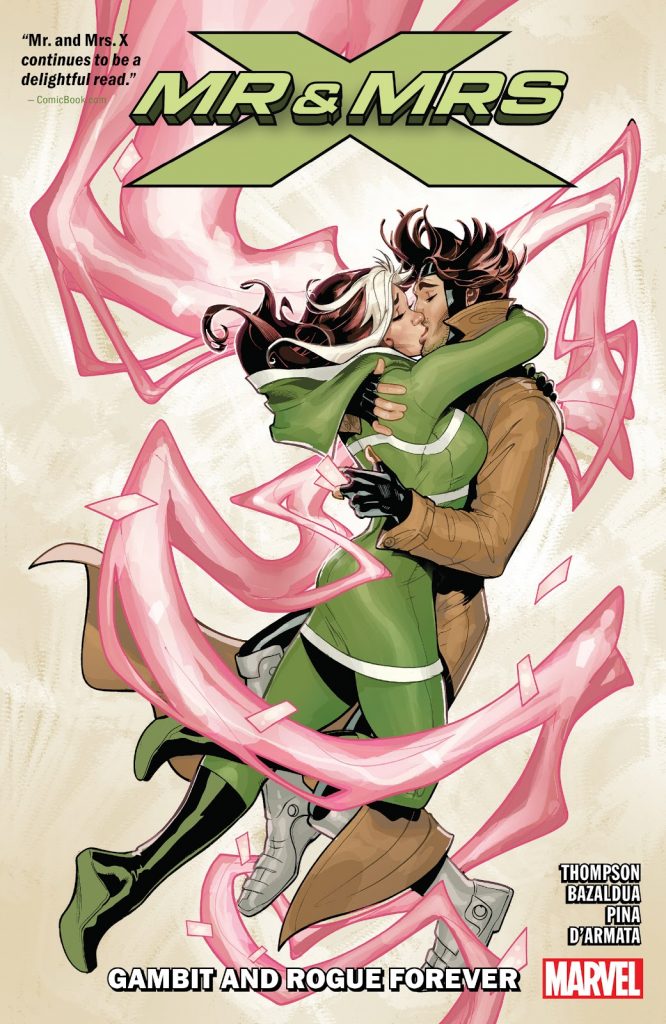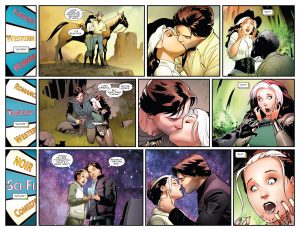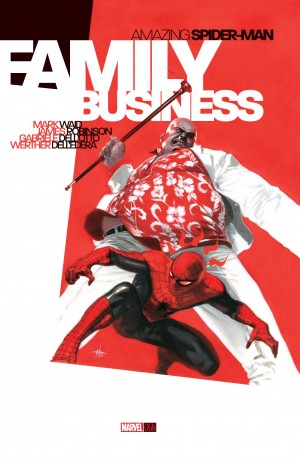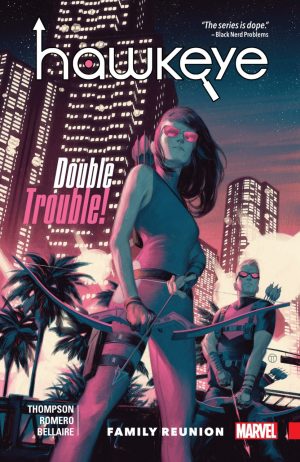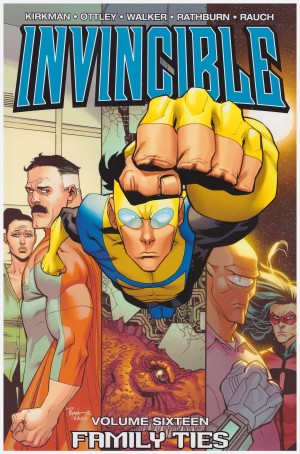Review by Frank Plowright
It turns out the ending to Love and Marriage was no joke, and we now discover why Gambit and Rogue are chained up and hanging over a pit of crocodiles. Perhaps Kelly Thompson’s channelling her childhood with a Moonlighting pastiche for the opening chapter, but it’s a very dated reference to be selling to anyone under forty. It’s not the only early 1990s reference in an opening story that actually strangely predicts the 2020 WandaVision TV show. It’s also an imaginative way of dealing with Rogue’s power problem.
The primary villain over the main story is Mojo, the quixotic alien obsessed with providing video programming that increases his audience. His surrounding motivations are novel, and his design impressive, with Oscar Bazaldua providing a good version, but his excessive personality is such that very little goes a long way. Thompson realises this, and constructs her story around the desires of his henchperson Spiral. That these coincide with the means to have Rogue take a good long look at herself is also smart.
As before, Bazaldua’s art is very much of the figures laid over colour backgrounds variety, although some scenes force him to depart from choice and actually provide a few locations. These are as sketchy as he can get away with, leaving colourist Frank D’Armata to provide the distraction. When Bazaldua is forced into using multiple characters the results are often messy, with little indication of what the focus ought to be. Javier Piña puts more effort into the first pages of the final chapter, but he overly sexualises all the women, and by halfway his art is also almost all figures.
The shorter story delves into Gambit’s status as King of Thieves, and those who’d prefer he wasn’t. It’s predictable in some respects, repeating scenes we’ve seen earlier, and nowhere near as entertaining as the encounter with Mojo. Overall, the writing on Mr and Mrs X is largely fun, but the art lets it down.
